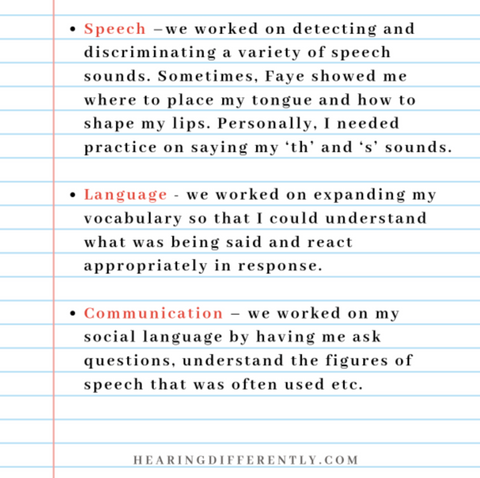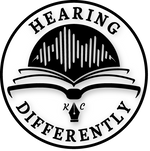English was my best subject growing up. I was considered to be one of the most advanced readers in class, and had a vocabulary that exceeded my age group. I even won the spelling bee in grade five (that was the only thing I won a trophy for – so it deserves a mention).
Where am I going with this?
When I was four years old, I barely knew how to speak English.
English wasn’t my first language. Arabic was. For people that know me, that is hard to believe considering I barely know any words in the language now.
Like many others born with hearing loss, I have a deaf accent. That accent would be a lot more pronounced if it weren’t for Faye Hetz.
Faye was my itinerant teacher, auditory verbal therapist and close family friend rolled into one.
When I was diagnosed with my hearing loss, my school board paired me up with Faye – who helped me learn how to speak.
Some Background History
I was born with profound sensorineural hearing loss. I did have some residual hearing at birth, which helped me pick up some language acquisition from my parents, who spoke mostly Arabic (my mom immigrated from Nazareth to Canada in her 20s and my father moved from Haifa to Canada when he was a child).
I spoke Arabic fluently, but my speech was slurred. At four years old, I was diagnosed with hearing loss and got fitted with hearing aids (and then the cochlear implant later on). When I was diagnosed, Faye Hetz came into my life and helped me learn how to speak and how to listen.
According to Faye, when she first met me, I could only say one word in English – manicure, because my Teta (grandmother) always went for manicures at her local salon.
AVT Therapy
Faye provided Auditory Verbal Therapy (AVT) to help me learn how to make sense of the sounds that came through my hearing aids and cochlear implant. Auditory Verbal Therapy is an intervention program that helps with a deaf person’s speech and language development.
The first step of AVT was that I had to only speak one language for it to work. I was living in a predominantly English-speaking country. This meant no more Arabic. My parents were told that trying to learn how to speak two languages and to differentiate the sounds between both of them would be difficult for me.
Faye sat down with me twice a week for AVT sessions from the time I was four up to when I was 12 years old. Soon enough, I knew more than just the word manicure in English. Those AVT sessions combined with my avid love for reading made my language flourish.
A Typical Session
A typical AVT session was ‘play-based’. Faye and my parents did various activities with me to help me use the sounds that I heard through my hearing devices to the best of my ability. A lot of these activities also helped me learn ‘how to listen’ but I will save that for the next post!
Three main parts of learning how to speak included:

Faye and my parents encouraged me to speak while doing activities like talking to me while doing the dishes, or reading a story during the day, or having imaginary tea parties with me.
My speech became less slurred, and more refined as these sessions wore on. I spoke clearly while talking to my family members, teachers and anyone else that would listen to me.
How am I now?
Honestly? I won’t shut up.
Ask anyone that knows me. They will probably say that I usually end up talking their ear off and going into way too many details about things. My dad usually complains that I should give a cliff notes version of whatever story I’m telling.
I could. But I won’t. 😉

